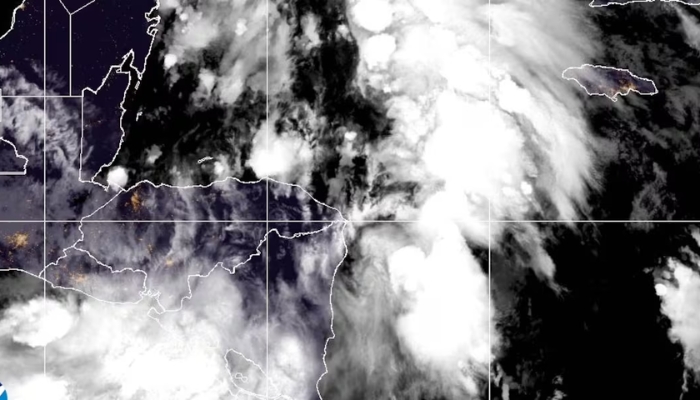
As of September 24, 2024, hurricane watches have been issued for Florida’s Gulf Coast, primarily due to the expected impact of Potential Tropical Cyclone Nine, which is forecast to strengthen into Hurricane Helene. This system is predicted to develop into a Category 3 hurricane, with possible landfall by the end of the week. Residents from Tampa Bay to the Panhandle are preparing for intense winds, heavy rainfall, and potentially life-threatening storm surges as the system moves across the warm waters of the Gulf of Mexico.
Understanding a Hurricane Watch

A hurricane watch means that hurricane conditions—defined as sustained winds of 74 mph or higher—are possible within a specific area, generally within the next 48 hours. It does not guarantee that a hurricane will hit but indicates that preparations should begin immediately. Residents in the watch area should remain alert and ready to act swiftly if evacuation orders are given.
Current Forecast and Preparations
The National Hurricane Center (NHC) has placed a hurricane watch across much of Florida’s west coast. The area includes major population centers such as Tampa Bay and Sarasota, which are particularly vulnerable to storm surges due to their coastal geography. A storm surge watch has also been issued, indicating the potential for rising water levels that could inundate normally dry areas along the coast.
The storm system is currently located south of the Cayman Islands, where it has been steadily gaining strength. Forecasts suggest that Helene could strike Florida’s Big Bend region, possibly triggering widespread evacuations in low-lying areas. The Florida Division of Emergency Management and Governor Ron DeSantis have already declared a state of emergency for 41 counties, streamlining the response and preparation efforts across the state.
Evacuation and Safety Measures
State and local authorities are urging residents in vulnerable areas to prepare for mandatory evacuations, which could be issued as the storm approaches. Coastal areas, especially those prone to flooding, are being advised to have evacuation plans ready. As the situation develops, Floridians are encouraged to use resources such as the Florida Storms app, which provides live updates, evacuation routes, and shelter locations.
Here are some key tips for hurricane preparation:
- Secure your home: Protect windows and doors with storm shutters or plywood. Bring in loose outdoor items that could become projectiles in high winds.
- Assemble an emergency kit: Include water, non-perishable food, medications, flashlights, batteries, and important documents.
- Know your evacuation route: Plan and stay informed about shelter options and emergency contacts.
- Stay informed: Follow updates from the NHC, local news stations, and the Florida Division of Emergency Management.
Storm Surge Threat

One of the most significant dangers from hurricanes is the storm surge. The NHC has highlighted the risk of a 7 to 11-foot surge in some parts of the Gulf Coast, which could overwhelm coastal infrastructure and homes. The surge is particularly threatening in the Big Bend area, where the shape of the coastline can amplify the surge effect. In the worst-case scenario, this could lead to catastrophic flooding that would require large-scale evacuations.
Economic and Environmental Impact
The potential for widespread damage looms large, not just in terms of immediate destruction but also the long-term economic and environmental consequences. Florida’s Gulf Coast, home to industries such as tourism, fishing, and agriculture, could face significant disruption. Power outages, which are common during such storms, could affect millions of people. Utility companies have already begun mobilizing crews to ensure a rapid response to downed power lines.
Entertainment and Public Events Impacted
Several public events, concerts, and festivals planned for the Gulf Coast region have been postponed or canceled as communities brace for the storm. While these disruptions are necessary for public safety, the economic impact on small businesses, particularly in tourism-driven areas, could be profound.
After the Storm: Recovery and Support
Once the storm passes, the focus will shift to recovery. The Federal Emergency Management Agency (FEMA) is coordinating with state agencies to prepare for the aftermath, offering support in the form of disaster relief funds and recovery teams. Residents are encouraged to document damage to their property for insurance claims, and financial assistance will be available for those severely affected by the storm.
The recovery phase often brings long-lasting challenges, from rebuilding homes to restoring local ecosystems. Florida’s Gulf Coast, with its delicate balance of coastal habitats and urban areas, faces environmental concerns such as beach erosion, water contamination, and the impact on wildlife. These are issues that require coordinated, long-term recovery efforts.
Conclusion
With hurricane watches in effect and the system rapidly intensifying, Floridians along the Gulf Coast must prioritize safety, preparation, and readiness. Helene’s path remains somewhat uncertain, but it poses a clear threat to a large portion of Florida’s population. From storm surges to high winds, the potential dangers are serious, and quick action will be essential in mitigating the worst outcomes.
For continued updates and detailed storm tracking, readers can follow weather alerts and local news, ensuring they stay informed during this critical time. Stay safe, and prepare accordingly.
For all the latest updates and safety tips, be sure to check out SavingGain, where we provide ongoing news, weather tips, and entertainment resources during significant weather events.








